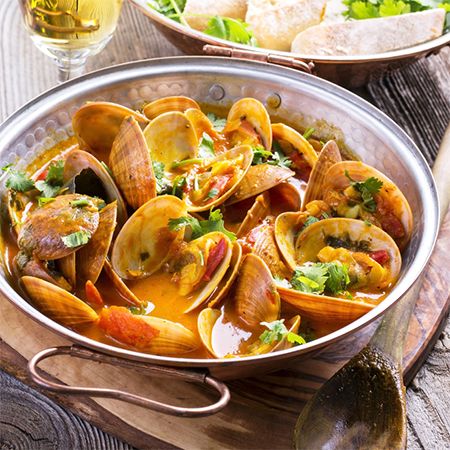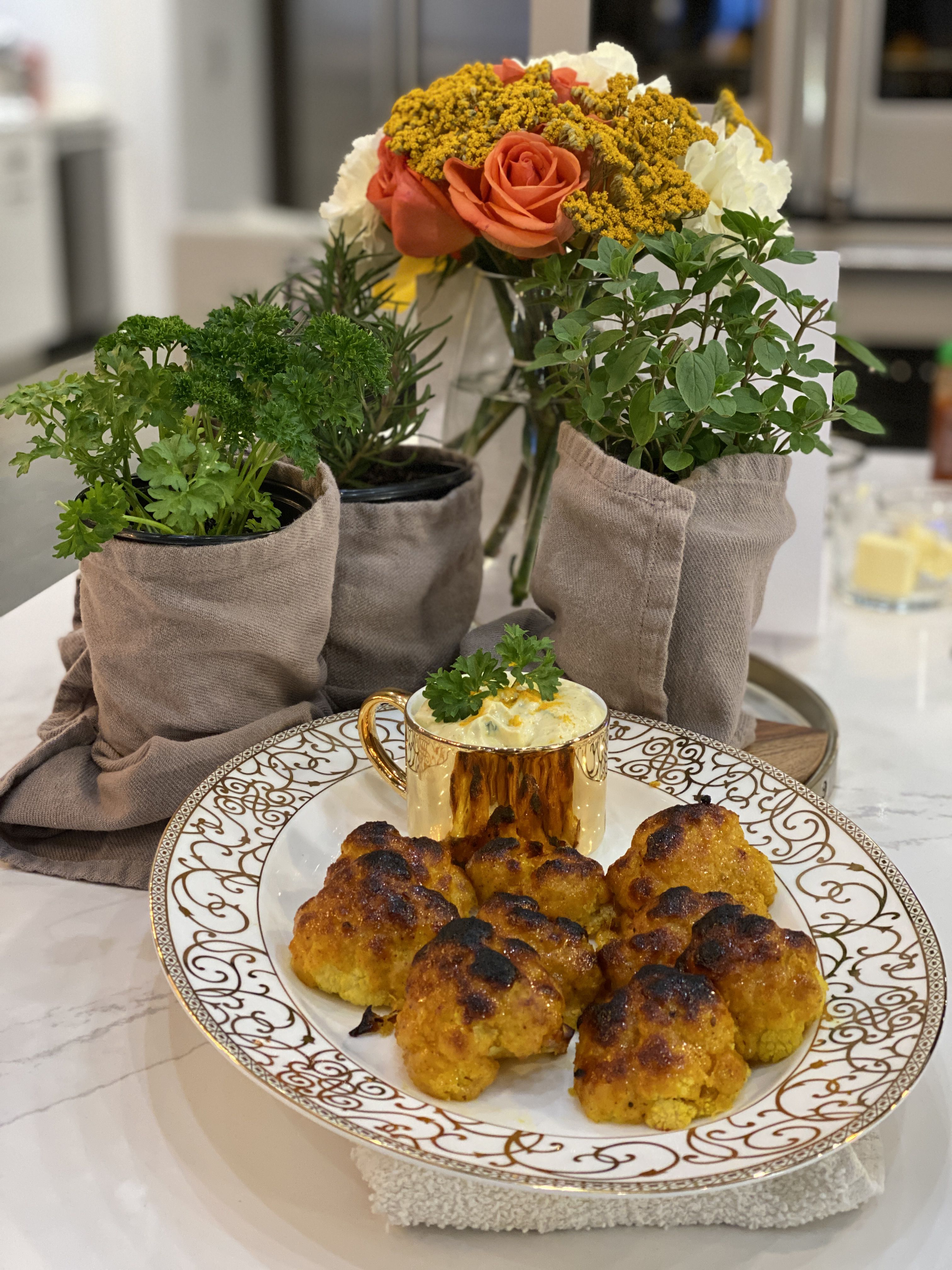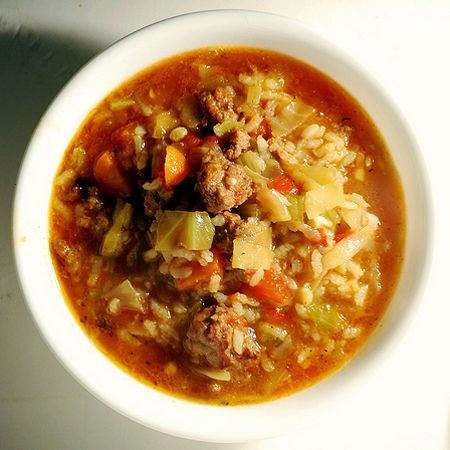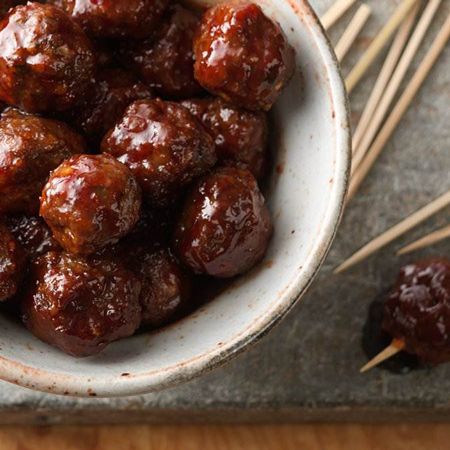Chef Brian Mottola: Bouillabaisse Showstopper | Chefter

Are you ready to put your range to work and your soul in the skillet? Then how about Bouillabaisse from Chef Brian Mottola, the Chef de Cuisine of Emeril Lagasse’s NOLA restaurant? This traditional French dish has made itself around the world and can make it to your stove top with some good ingredients and a little technique.
It’s amazing how peasant dishes have made their way to some of the top restaurant menus across the world. Bouillabaisse started on the docks of French Marseille by the local fisherman to utilize the bony rock fish they couldn’t sell at the markets. The name for Bouillabaisse comes from the translation of the word, to boil fish, which speaks to the preparation of the dish. There’s even evidence of the dishes’ roots going back to ancient Venetians and Greeks.
There are many different versions of Bouillabaisse and the dish found renewed fame when Julia Child brought French food to the world. When it comes to Bouillabaisse, what’s important is the freshness and quality of seafood. It’s made to be served very hot and to cook the seafood right before you serve it, which makes it perfect for cooking and entertaining at parties.
As a home cook, it’s not always easy to prepare everything perfectly or to do it without stress. Chefter is a new app that connects home cooks to professional chefs for real time culinary support. Open the app to show and tell your culinary questions or ideas with a live, experienced chef and get real-time solutions! Cooking with a chef on your smartphone is the new way to have fun in the kitchen. Download the app for free here and use promo code twentyOFF for a free session with Chefter's amazing chefs!
Ingredients
1 cup Olive Oil
1/4 cup Whole Almonds
3 Red Peppers
2 oz. Sherry Vinegar
1 cup Large Yellow Onions, thinly sliced
1/2 cup Leek (white and light green parts only), sliced into thin half-moon shapes
1/2 cup Fennel Bulb, thinly sliced
2 tbsp. Garlic, thinly sliced
1 can Petite Diced Tomatoes, with juice (14.5 oz.)
1/2 cup Pernod or Herbsaint
1/2 cup Dry White Wine
1/4 tsp. Crushed Saffron Threads, crumbled between your fingers
1 tsp. Salt
1/2 tsp. Freshly Ground Black Pepper
2 1/2 quart Shrimp Stock
1 Bay Leaf
2 Fresh Thyme Sprigs
2 Fresh Parsley Sprigs
5 Black Peppercorns
16 Littleneck Clams, Scrubbed and Purged
16 Mussels, Scrubbed and Debearded
2 lb. Grouper or White Fleshy Fish, skinless
1/2 lb. Bay Scallops, Dry Pack
Steps
- First, make the Romesco. To start, you want to confit the almonds. To do this, place the almonds and 1/2 cup olive oil in a small sauce pan over medium heat. Slowly simmer the almonds for about 30 minutes. Then strain almonds and reserve the oil. Next, we will roast the red peppers on an open flame or grill until completely charred on the outside. Once. the peppers are charred, place them in a small bowl and cover with plastic wrap. Once they’ve sat in the covered bowl for about 15 minutes, peel the charred skin away from the pepper. Cut the centers and seeds from the peppers. In a blender, add the roasted red peppers and blend on low while slowly drizzling in the 1/2 cup of oil you strained from your almonds. Add sherry vinegar and season with salt and pepper to taste.
- In an 8-quart or larger pot, heat the Romesco you made over medium heat. Add the onions, leek, fennel and garlic. Cook while occasionally stirring for 6 minutes. Add the tomatoes and cook while stirring for 1 minute. Stir in the Pernod, wine and saffron. Increase the heat to medium-high and cook for 1 minute more. Add a little salt and pepper, stir well, then add the stock and bring to a boil. Add the bay leaf, thyme, parsley and peppercorns. Lower the heat and simmer for about 20 minutes.
- Clams are notoriously sandy because of the fine grooves along the outside width of the shells. Those little grooves grab grains of sand and hold on to them. Just a few pieces of sand can ruin a dish. To properly purge them, quickly soaking the clams in ice cold water then thoroughly scrub outside of shells with soft bristled brush to clean between the grooves. Rinse and repeat 3 to 4 times.
- Mussels are similarly grown in sandy areas but their shells are not quiet as textured so you don’t have to use as much effort to purge. Use the same process you did for the clams of rinsing and scrubbing. The beard or byssal thread is what the mussel uses to attach itself to the ocean floor. It’s tasteless and you want to remove it. The best way to do that is to have a wet kitchen towel in one hand and the mussel in the other. Grab the thread or the beard with the wet towel and pull toward the bottom of the shell to detach it.
- Add the clams, mussels and fish to the pot. Cook for 10 minutes, covered. You can tell it’s ready when the clams and mussels have opened and the fish is just cooked through. Remove from the heat and discard any unopened clams or mussels. Adjust seasoning to taste. Serve and enjoy.


